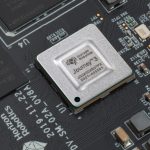
For anyone who’s ever struggled to read somebody’s handwriting – or even their own – this may be of interest: Captricity, an Oakland-based provider of digital automation software, has claimed its AI can outperform humans in reading handwriting.
The company is touting its Captricity READ product, where enterprises in various sectors including financial, healthcare and government, can use the system to convert the handwritten word into decision-ready data in a fraction of the usual time. Captricity adds that its AI offers 91% accuracy and can help organisations achieve straight-through processing (STP) from handwritten forms, bringing down manual effort by 80%.
Captricity READ is fuelled by a deep neural network, which has been prepared using tens of millions of data points – represented ‘35 lifetimes’ of experience in reading, the company claims – curated from one billion text transcription tasks processed in the last five years. The company also claims to have the world’s greatest dataset for handwriting training, which helps enterprises deploying Captricity READ get results straight away.

“Surpassing humans with machine reading is a watershed moment for digital automation,” said Kuang Chen, founder and CEO of Captricity. “Enterprises have struggled with automation technology due to extremely low accuracy in reading handwriting and poor quality images. Unlike any previous technology, Captricity READ is the missing link that drives intelligent automation enterprise-wide.”
Captricity is by no means the only company exploring this problem. HyperScience, a company based out of New York and Sofia, looks at this in the wider context of using machine learning to automate and simplify office work. The company is training a neural network to analyse handwriting for both structured data, such as forms which need to be filled out, and unstructured data.
“HyperExtract – the company’s handwriting transcription and data capture product – incorporates advanced deep learning and computer vision techniques to achieve far more accurate transcription results than existing solutions,” the company explains. “This enables large enterprises and government institutions to replace the management overhead of maintaining large, expensive manual data entry and rekeying operations with an increased focus on the core activities for their business.”
Captricity READ is available effective immediately.





